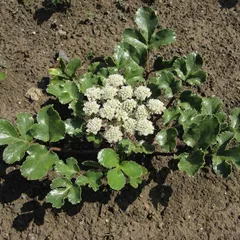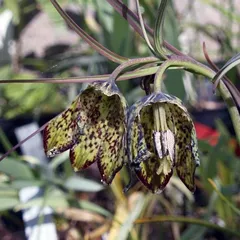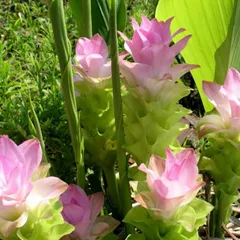He Ye Di
He Ye Di
English: Lotus leaf calyxes
Chinese: 荷叶蒂
Parts used: The leaf calyx
TCM category: Herbs that clear Heat and purge Fire and/or clear Summer Heat
TCM nature: Neutral
TCM taste(s): Bitter
Organ affinity: Spleen Large intestine Liver
Scientific name: Nelumbo nucifera
Other names: Indian lotus, Sacred lotus, Bean of India, Egyptian bean
Use of He Ye Di (lotus leaf calyxes) in TCM
Please note that you should never self-prescribe TCM ingredients. A TCM ingredient is almost never eaten on its own but as part of a formula containing several ingredients that act together. Please consult a professional TCM practitioner, they will be best able to guide you.
Preparation: Collect the lotus leaf calyx, remove impurities, clean and dry
Dosage: 7.5-15g
Main actions according to TCM*: Relieves Summer Heat and Dampness. Stops bleeding caused by Heat of Stagnation. Calms restless fetus.
Primary conditions or symptoms for which He Ye Di may be prescribed by TCM doctors*: Blood in urine Restless fetus Summer Heat Blood in stools
Common TCM formulas in which He Ye Di is used*
Qi Ge San
Source date: 1732 AD
Number of ingredients: 8 herbs
Formula key actions: Regulates Qi and removes Stagnation. Moistens Dryness. Transforms Phlegm.
Conditions targeted*: EsophagitisEsophageal diverticulum and others
He Ye Di is an assistant ingredient in Qi Ge San. This means that it either serves to reinforces the effect of other ingredients or it moderates their toxicity.
In Qi Ge San, He Ye Di directs the Yang upward and strengthens the Spleen's transportive and transformative functions to dispel Dampness and harmonize the Stomach.
Together, all the assistant herbs effectively facilitate the
downward-directing of turbid Phlegm and support the ascent of the clear Yang to unblock the Qi dynamic and eliminate Excess Pernicious Factors without causing further Dryness.
Key TCM concepts behind He Ye Di's properties
In Traditional Chinese Medicine (TCM), He Ye Di belongs to the 'Herbs that clear Heat and purge Fire and/or clear Summer Heat' category. Herbs in this category are used to clear inflammatory and infectious conditions, referred to as 'Internal Heat' in TCM. This is why most of the herbs in this category will have both antibacterial and antiviral properties. In TCM one has too much 'Internal Heat' in their body as a result of a deficiency of 'Yin' (which is Cold in nature, see our explanation on Yin and Yang) or, more commonly, an Excess of Yang (Hot in nature). Herbs that clear Heat and purge Fire treat the latter and as such tend to be Cold or Neutral in nature.
As suggested by its category He Ye Di is Neutral in nature. This means that He Ye Di typically doesn't affect the balance in your body. Balance between Yin and Yang is a key health concept in TCM. Eating too many "Hot" (Yang) ingredients can lead to an imbalance whereby one has a Yang Excess. The inverse is true as well: too many "Cold" (Yin) ingredients can lead to a Yin Excess. The Neutral nature of He Ye Di means that you don't have to worry about that!
He Ye Di also tastes Bitter. The so-called 'Five Phases' theory in Chinese Medicine states that the taste of TCM ingredients is a key determinant of their action in the body. Bitter ingredients like He Ye Di tends to have a cleansing action on the body by clearing Heat, drying Dampness and promoting elimination via urination or bowel movements.
The tastes of ingredients in TCM also determine what Organs and Meridians they target. As such He Ye Di is thought to target the Spleen, the Large intestine and the Liver. In TCM the Spleen assists with digestion, Blood coagulation and Fluids metabolism in the body. The Large Intestine on the other hand receives the "impure" parts of the digested food from the Small Intestine, absorbs the remaining fluids and excrete the remainder as feces. The Liver is often referred as the body's "general" because it is in charge of regulating the movements of Qi and the Body Fluids. It also takes a leading role in balancing our emotions.





